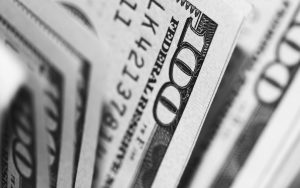Foreign exchange market, also known as Forex or FX, is the largest financial market in the world, with an average daily turnover of over $5 trillion. It is a decentralized market, meaning that it does not have a central exchange, and instead operates through a network of financial institutions, such as banks, brokers, and dealers, located in different parts of the world.
Forex trading involves buying and selling currencies with the aim of making a profit from the fluctuations in their exchange rates. The exchange rate is the value of one currency in relation to another, and it is determined by the supply and demand for the respective currencies in the market.
The most commonly traded currencies in the Forex market are the US dollar (USD), the euro (EUR), the Japanese yen (JPY), the British pound (GBP), the Swiss franc (CHF), the Canadian dollar (CAD), and the Australian dollar (AUD).
Forex trading is conducted through trading platforms that are provided by brokers or financial institutions. These platforms allow traders to access the market, view real-time prices, execute trades, and manage their positions.
The Forex market operates 24 hours a day, five days a week, with trading sessions starting on Sunday evening in Asia and closing on Friday evening in New York. This allows traders from all over the world to participate in the market at any time, making it a truly global market.
The Forex market is highly liquid, which means that there are always buyers and sellers willing to trade, and the market can absorb large transactions without significant price movements. This makes it easier for traders to enter and exit positions, and to take advantage of short-term price movements.
One of the unique features of the Forex market is leverage, which allows traders to control a larger position than their initial investment. Leverage is a double-edged sword – it can amplify profits, but it can also increase losses. Therefore, it is important for traders to use leverage wisely and to have a risk management strategy in place.
Forex trading involves a range of participants, from individual traders to large financial institutions. The market is influenced by a variety of factors, including economic data, political events, and central bank policies. Traders use a range of tools and techniques to analyze the market and make trading decisions, including technical analysis, fundamental analysis, and sentiment analysis.
In conclusion, the Forex market is a dynamic and complex market that operates through a network of financial institutions around the world. Forex trading involves buying and selling currencies with the aim of making a profit from the fluctuations in their exchange rates. The market is highly liquid, operates 24 hours a day, and offers traders the opportunity to use leverage to control larger positions. However, Forex trading also involves risk, and traders need to use risk management strategies to minimize losses.





